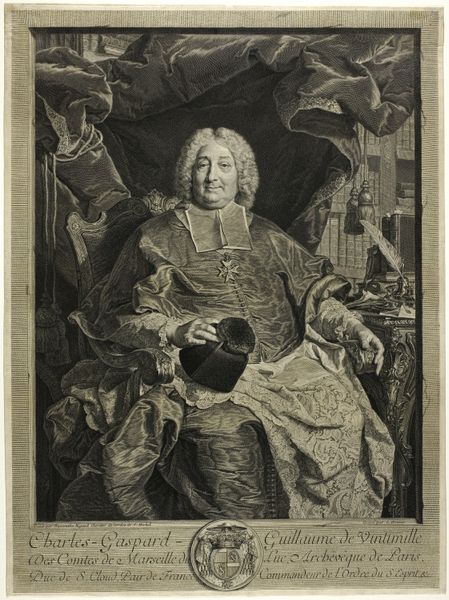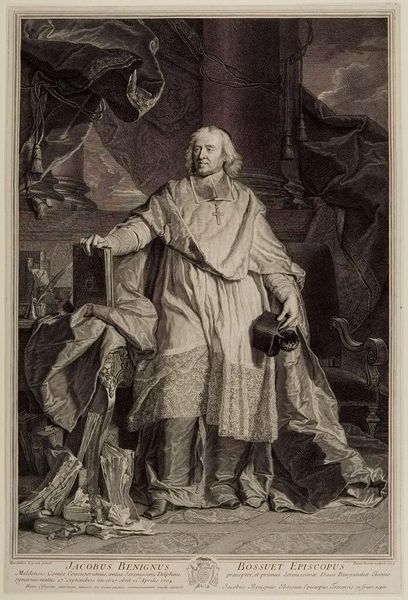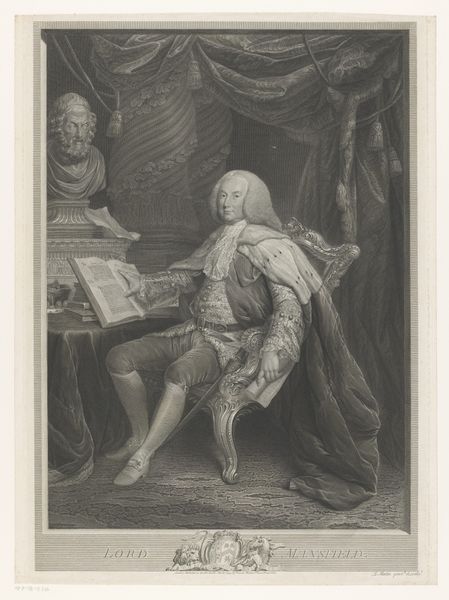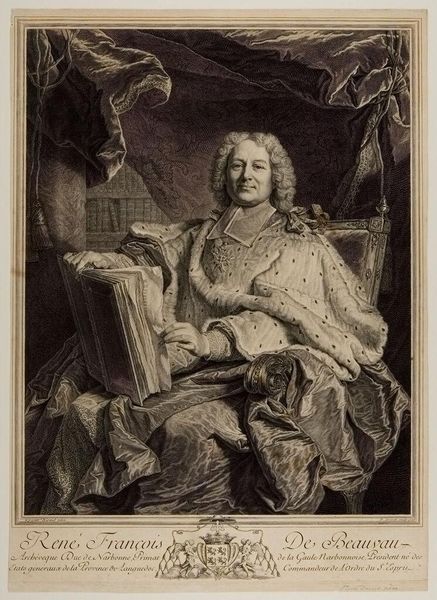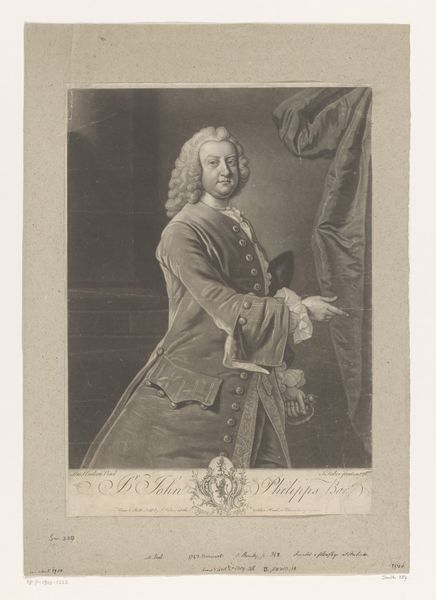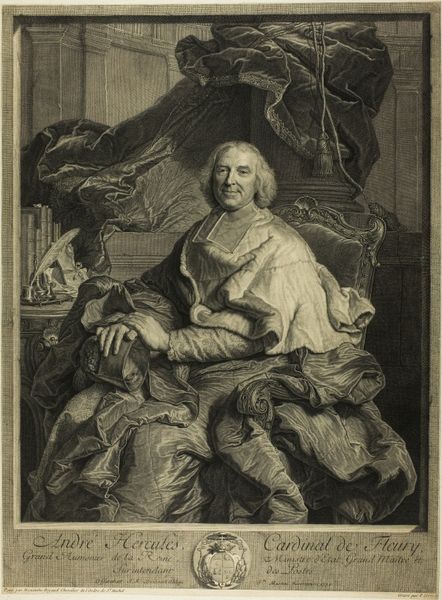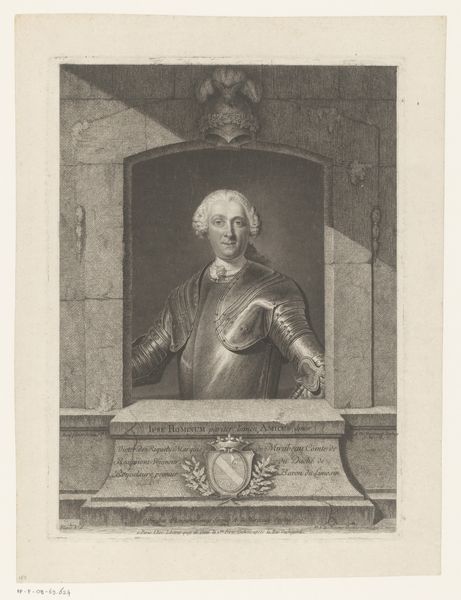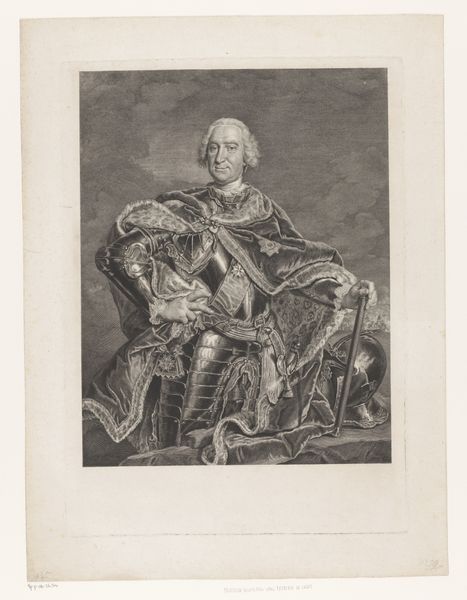
print, engraving
#
portrait
#
baroque
# print
#
france
#
history-painting
#
engraving
Dimensions: 18 5/8 x 13 1/8 in. (47.31 x 33.34 cm) (image)19 7/8 x 13 7/8 in. (50.48 x 35.24 cm) (sheet)
Copyright: Public Domain
Curator: Here we have Pierre Drevet's "Portrait of Jacques Bénigne Bossuet," an engraving from 1723, now residing at the Minneapolis Institute of Art. What’s your initial response? Editor: The stark black and white gives it a severe formality, but his expression is quite serene, almost contemplative. There is so much depth in the folds of his garments, as well as in the drapery in the background. It makes me think of authority and reflection. Curator: Engravings of this era involved meticulous work—etching lines into a metal plate, then inking and pressing it onto paper. Consider the labor invested. These aren't just images, they're material objects produced within specific economic conditions. A skilled craftsman like Drevet and the high level of materials surely signified prestige and status. Editor: Absolutely. Look at the recurring cross motifs—on his neck, on the book spine he rests his hand on—each reiterating Bossuet’s spiritual authority. Even the books on the table hint at knowledge, wisdom, perhaps theological debate. The open book may indicate he is available for queries. Curator: These portraits acted as commodities circulating within elite circles. They facilitated the exchange of ideas and reinforced social hierarchies. Consider how a print allowed for wider distribution, beyond just the realm of painting. Editor: Precisely! And beyond its function as a status symbol, there’s Bossuet's own image. He was a prominent bishop and theologian; his likeness would carry immense symbolic weight. Even the way he's posed, holding his biretta and subtly gazing off into the distance, projects both power and piety. His expression conveys gravitas but there’s still warmth there, that knowing look that gives authority and is deeply engaging for the viewer. Curator: It speaks to the ingenuity of image reproduction for reinforcing existing societal structures, the deliberate construction and consumption of such materials within a rigid class system. Editor: It all contributes to the image he wished to convey to posterity. It invites us to consider the enduring power of visual representation, of how symbols can condense complex cultural values and transmit them through generations. What begins with materials and manufacture, transcends into iconography that holds great social, historical and personal impact. Curator: Indeed, reflecting on process allows us a better understanding of the symbols, and reflecting on symbols in turn highlights the true labour of creation. Editor: It truly deepens one's appreciation for both the object and its inherent complexities.
Comments
No comments
Be the first to comment and join the conversation on the ultimate creative platform.

